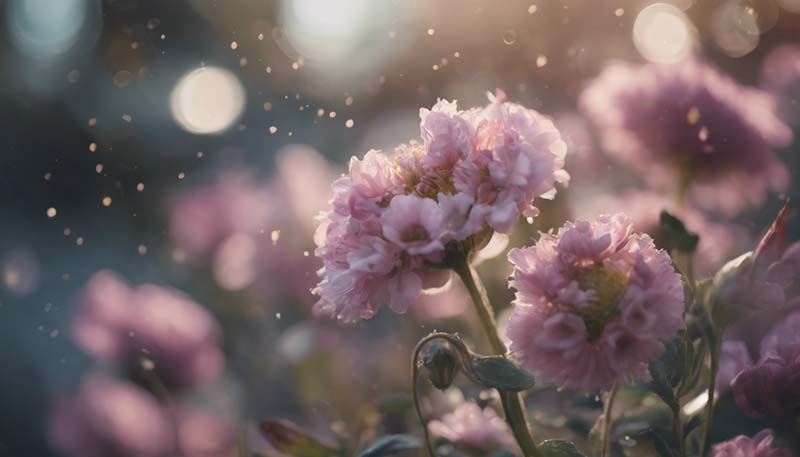Seasonal Flower Photography: Lighting Techniques for Stunning Shots
Photography and Inspiration | 2024-06-28
Seasonal Flower Photography: Lighting Techniques for Stunning Shots
Photography is as much an art as it is a science, and capturing the beauty of seasonal flowers is no exception. This article will guide you through various lighting techniques that can transform your flower photography, making each shot a stunning masterpiece.
Understanding Light
Before diving into specific techniques, it's crucial to understand how light interacts with flowers. The time of day, weather conditions, and the direction of the light can all affect the final image. Here's a brief overview of the types of light you might work with:
- Natural Light: The most accessible and often most flattering for flowers.
- Golden Hour: The first and last hour of sunlight, providing a warm, soft glow.
- Overcast Light: Soft, diffused light that's great for reducing harsh shadows.
- Direct Sunlight: Can create strong highlights and deep shadows, which can be used creatively.
- Artificial Light: Flashes, continuous lights, and even lamps can be used to enhance or manipulate the scene.
Golden Hour Magic
Golden hour is a favorite among photographers for its warm, diffused light that enhances the natural colors of flowers. To make the most of this light:
Advertisement
- Plan your shoot to coincide with the golden hour, which is just after sunrise or just before sunset.
- Position your flowers to face the light source to maximize the warm tones.
- Use a reflector to bounce light back onto the flowers and fill in any shadows.
- Experiment with different apertures to create a shallow depth of field, which can blur the background and make the flowers stand out.
Overcoming Harsh Light
Direct sunlight can be too intense, washing out colors and creating harsh shadows. Here's how to deal with it:
- Shoot in the Shade: Find a shaded area to shield your flowers from direct sunlight.
- Use a Diffuser: A diffuser can soften the light, reducing shadows and maintaining detail.
- Embrace High Contrast: If you can't avoid harsh light, consider shooting in black and white to create high-contrast images.
Filling in Shadows with Reflectors
Reflectors are a simple yet effective tool to fill in shadows and bring out the details in your flowers:
- Select the right reflector material based on the intensity of light you need.
- Position the reflector on the opposite side of the light source to bounce light onto the flowers.
- Adjust the angle and distance of the reflector to control the amount of light being reflected.
- White reflectors provide soft fill light, while silver or gold can add warmth or a dramatic effect.
Using Artificial Light for Nighttime or Studio Shots
When natural light isn't an option, or you're looking for more control, artificial lighting can be a game-changer:
- Studio Lights: Use softboxes or umbrellas to create diffused light in a studio setting.
- Speedlights: Off-camera flash can add depth and direction to your images when used with diffusers or bounces.
- Continuous Lights: These provide a constant light source that's great for seeing your composition in real-time.
- LED Lights: Battery-powered and portable, perfect for on-location night shoots.
Experimenting with Backlighting
Backlighting, where the light source is behind the subject, can create a dramatic effect:
- Position your flowers between you and the light source to create a silhouette or a halo effect.
- Use a lens hood or shoot at a slight angle to avoid lens flare.
- Experiment with different exposure levels to capture the details within the flowers or to create a silhouette.
- Consider using a reflector or a fill flash to brighten the front of the flowers if they appear too dark.
Post-Processing Considerations
After you've captured your images, post-processing can enhance the lighting effects:

- Adjust Exposure: Correct any overexposed or underexposed areas to bring out details.
- Play with Contrast: Increase contrast to make colors pop and to add depth to the image.
- Color Balance: Adjust the temperature to enhance the natural colors of the flowers or to create a specific mood.
- Sharpening: Use sharpening tools to bring out the intricate details of the petals and leaves.
Conclusion
Seasonal flower photography is a celebration of nature's beauty, and mastering lighting techniques can elevate your images to new heights. Whether you're working with natural light or artificial sources, the key is to experiment and practice until you find the style that best captures the essence of each flower and season.
Remember, the goal is not just to take a picture, but to create a story that resonates with viewers and showcases the vibrant life of each floral subject.
Comments